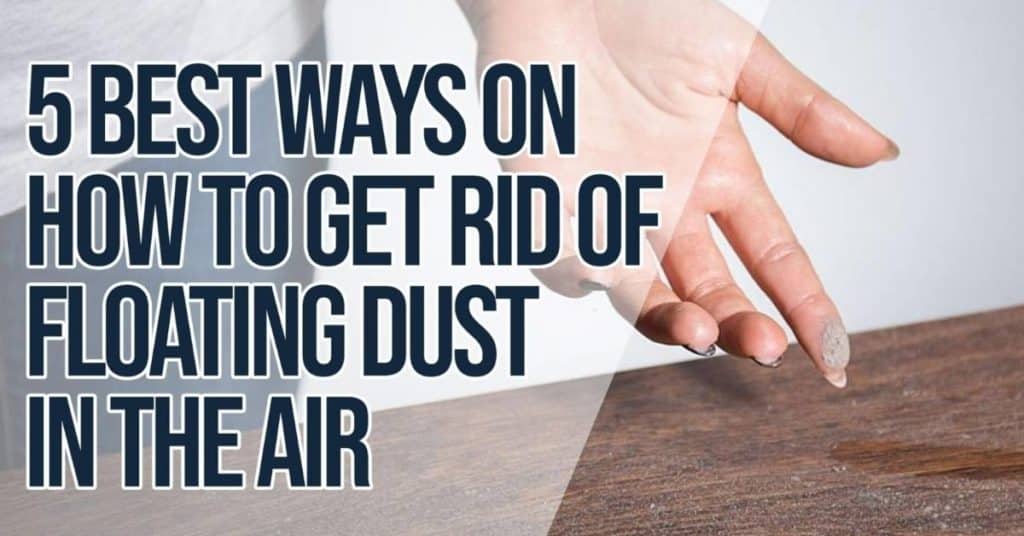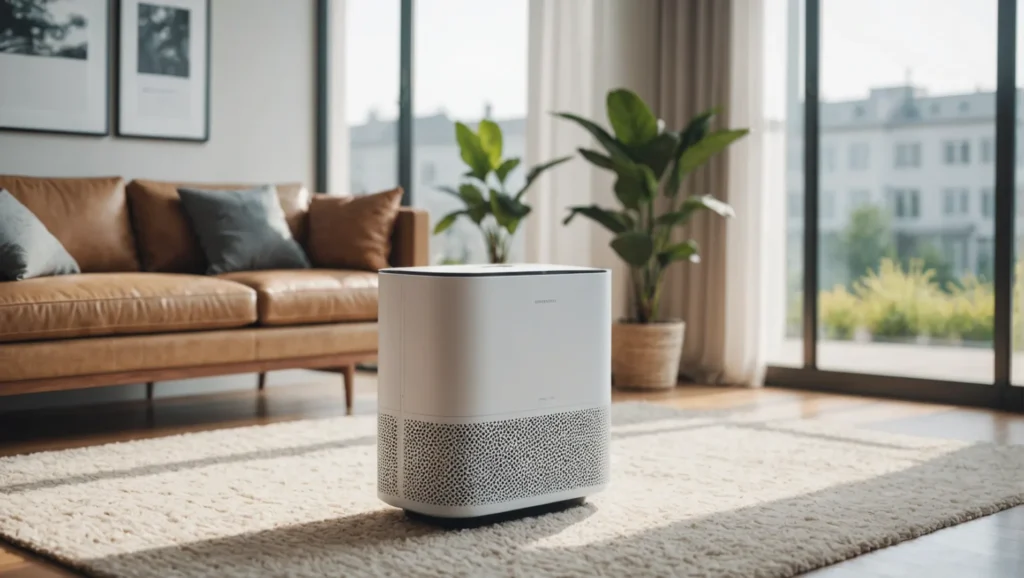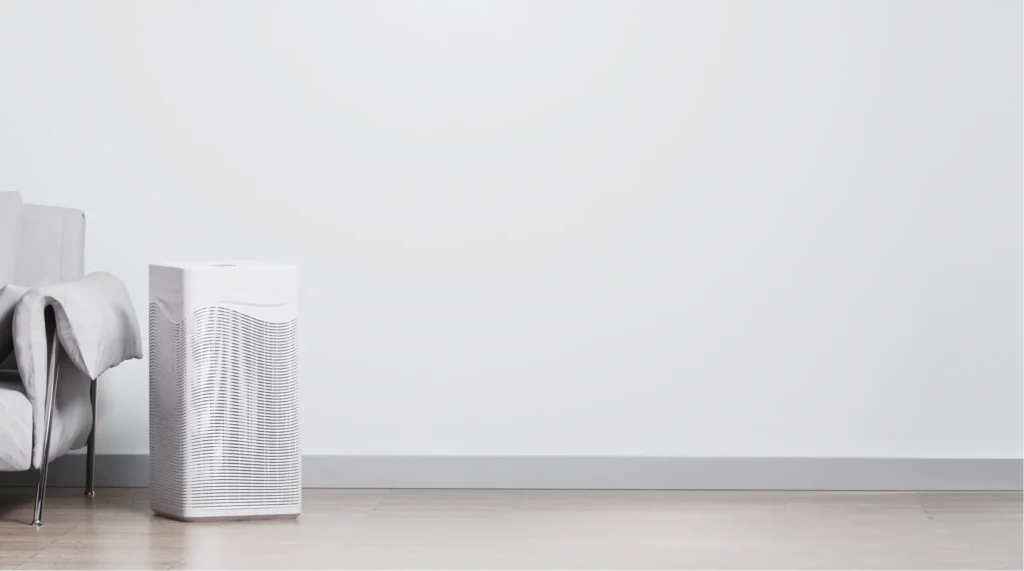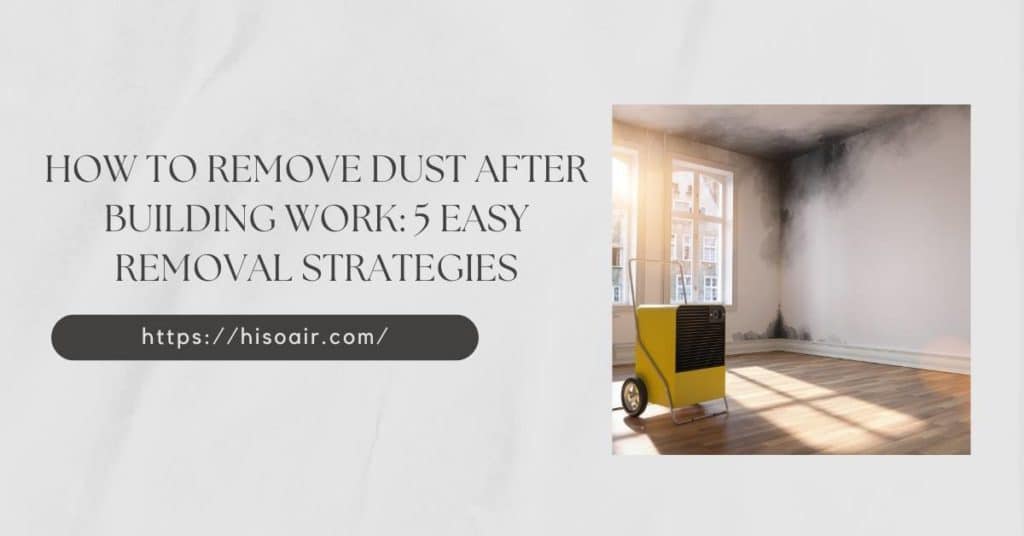
L'apparition de la pandémie de COVID-19 a mis les purificateurs d'air sous les feux de la rampe, les faisant passer du statut de produit de niche à celui de produit de première nécessité pour les ménages.
La pandémie de COVID-19 a fait exploser la demande de purificateurs d'air, les consommateurs cherchant à protéger la qualité de l'air intérieur contre les virus en suspension dans l'air. Cela a entraîné une concurrence accrue, avec l'arrivée de nombreuses nouvelles marques sur le marché, bien que certaines d'entre elles aient été confrontées à des difficultés après la pandémie.
Si le pic immédiat de la demande s'est atténué, l'impact de la pandémie sur la sensibilisation des consommateurs à la qualité de l'air reste important. Ce blog explore la manière dont la dynamique du marché a évolué et ce que l'avenir réserve aux purificateurs d'air.
COVID-19 : augmentation de la demande de purificateurs d'air en raison des préoccupations en matière de santé.Vrai
La pandémie a sensibilisé le public à la qualité de l'air intérieur, ce qui a stimulé les ventes.
Quels sont les facteurs à l'origine de la hausse de la demande de purificateurs d'air au cours du COVID-19 ?
Lorsque le COVID-19 s'est répandu dans le monde, les purificateurs d'air ont fait l'objet d'une demande sans précédent, reflétant un changement dans les priorités des consommateurs.
Pendant la pandémie de COVID-19, les préoccupations sanitaires accrues et l'augmentation du temps passé à l'intérieur ont fortement stimulé la demande de purificateurs d'air. Les consommateurs sont devenus plus attentifs à la qualité de l'air intérieur, ce qui a entraîné une augmentation des ventes, les gens cherchant à réduire le risque de transmission du virus par l'air.
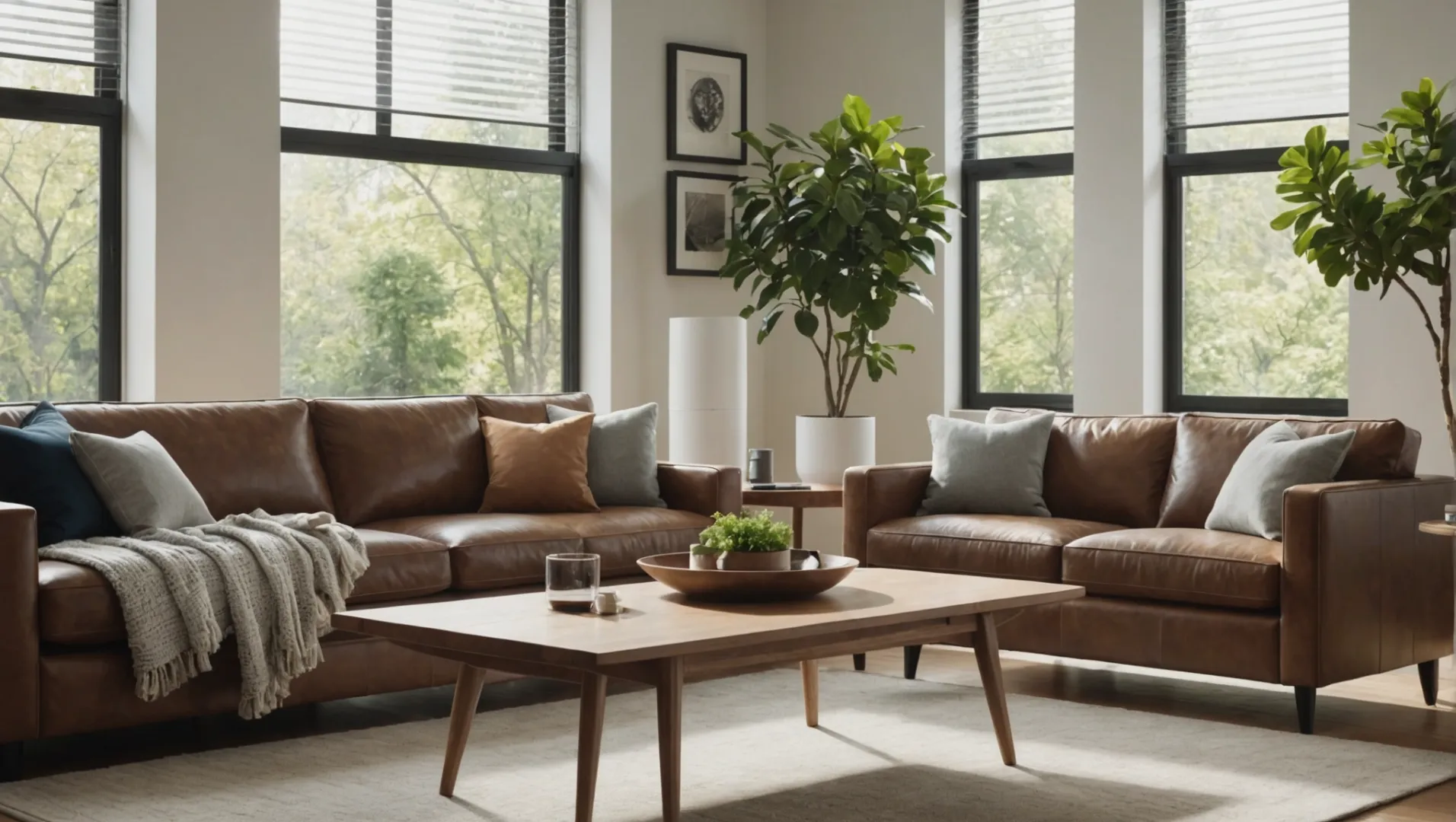
Préoccupations sanitaires accrues et protection contre les virus
Avec le début de la pandémie de COVID-19, les gens ont pris conscience des dangers posés par les virus en suspension dans l'air. La demande de produits susceptibles de réduire l'exposition à ces agents pathogènes a donc fortement augmenté. Les purificateurs d'air, qui peuvent filtrer les particules en suspension dans l'air, sont rapidement devenus populaires en tant que mesure préventive contre la transmission des virus. La demande était particulièrement prononcée dans les zones urbaines où la densité de population est élevée et où la ventilation des bâtiments n'est pas toujours optimale.
Augmentation des améliorations de l'environnement domestique
La pandémie a contraint de nombreuses personnes à passer plus de temps à l'intérieur en raison des fermetures d'usines et des modalités de travail à distance. Cette évolution a conduit à une plus grande attention portée à l'amélioration de l'environnement domestique. Les consommateurs ont commencé à investir dans des produits susceptibles d'améliorer la qualité de l'air intérieur, tels que les purificateurs d'air. L'augmentation des activités à domicile a également entraîné une augmentation des polluants intérieurs, tels que ceux provenant de la cuisine et du nettoyage, ce qui a fait des purificateurs d'air une option intéressante.
Concurrence sur le marché et prolifération des marques
L'explosion de la demande a attiré de nombreux nouveaux arrivants sur le marché, ce qui a considérablement accru la concurrence. Un large éventail de nouvelles marques a lancé des purificateurs d'air, chacune revendiquant des avantages uniques ou des technologies avancées. Cette concurrence intense a stimulé l'innovation, mais a également conduit à la saturation du marché. Certaines marques ont prospéré en proposant des produits de qualité supérieure ou des stratégies de marketing efficaces, tandis que d'autres ont lutté pour conserver leur part de marché après la pandémie.
| Facteurs clés | Impact sur la demande |
|---|---|
| Préoccupations en matière de santé | Sensibilisation accrue et mesures préventives |
| Qualité de l'air intérieur | Amélioration de l'environnement domestique grâce à un séjour prolongé à l'intérieur des bâtiments |
| Concurrence sur le marché | Prolifération des marques et innovation |
Implications futures et tendances émergentes
Même si la panique immédiate s'estompe, la sensibilisation à la qualité de l'air intérieur demeure. Cette prise de conscience devrait soutenir la demande dans les secteurs du bien-être et de la santé, d'autant plus que les consommateurs continuent à rechercher des solutions pour éliminer non seulement les virus, mais aussi la fumée, les odeurs et les composés organiques volatils (COV). La possibilité d'une future législation gouvernementale visant à réglementer les normes de qualité de l'air, comme la fixation d'un nombre minimum de renouvellements d'air par heure (ACH) pourraient influencer davantage la dynamique du marché.
Pour en savoir plus sur l'évolution des habitudes de consommation après la pandémie et sur les conséquences pour le marché des purificateurs d'air, vous pouvez consulter les documents suivants évolution de la sensibilisation des consommateurs1 et comment les politiques gouvernementales pourraient avoir un impact2 la demande future.
Les purificateurs d'air réduisent le risque de transmission des virus par voie aérienne.Vrai
Les purificateurs d'air filtrent les particules, ce qui peut réduire l'exposition aux virus.
La demande de purificateurs d'air a diminué au cours de l'enquête COVID-19.Faux
La demande a augmenté en raison des préoccupations sanitaires accrues et du temps passé à l'intérieur.
Comment les nouveaux entrants sur le marché ont-ils modifié le paysage concurrentiel ?
La pandémie de COVID-19 a entraîné un afflux de nouvelles marques sur le marché des purificateurs d'air, ce qui a considérablement modifié le paysage concurrentiel.
L'arrivée de nouveaux acteurs sur le marché pendant la pandémie de COVID-19 a accru la concurrence dans le secteur des purificateurs d'air, entraînant une baisse des prix et une intensification de l'innovation, mais aussi la faillite de certaines entreprises après la pandémie.
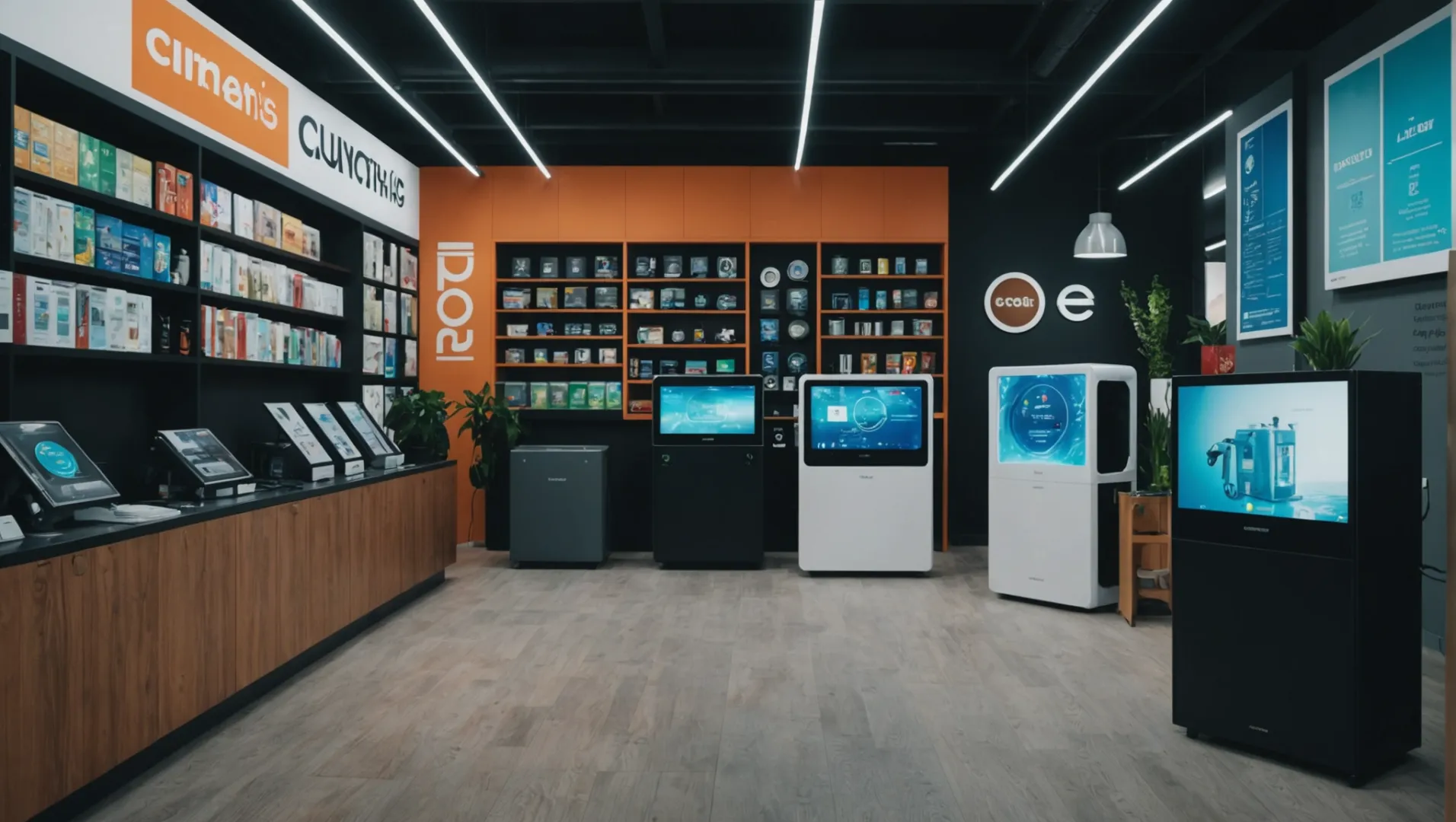
L'impact de la pandémie sur l'entrée sur le marché
Le marché des purificateurs d'air a connu une croissance sans précédent pendant la pandémie de COVID-19, car les gens sont devenus plus conscients de la qualité de l'air intérieur. Avec une demande en plein essor, de nombreuses nouvelles entreprises sont entrées sur le marché. Cet afflux de nouveaux entrants a entraîné une augmentation de la demande de purificateurs d'air. environnement hyperconcurrentiel3 qui a radicalement changé la dynamique du marché.
L'essor de la concurrence et de l'innovation
Avec de nombreuses marques se disputant l'attention des consommateurs, la concurrence est devenue féroce. Cela a non seulement fait baisser les prix, mais a également encouragé l'innovation. Les entreprises ont été contraintes d'améliorer les caractéristiques de leurs produits, telles que des capacités de filtration accrues, un fonctionnement plus silencieux et l'intégration de technologies intelligentes.
Une comparaison complète des facteurs clés, tels que le prix, la technologie et les évaluations des consommateurs, a montré comment la concurrence alimente les progrès :
| Facteur | Prépandémie | Pendant la pandémie | L'après-pandémie |
|---|---|---|---|
| Prix moyen | Haut | Plus bas | Stabilisé |
| Taux d'innovation | Modéré | Haut | Soutenu |
| Visibilité de la marque | Peu de leaders | De nombreuses nouvelles marques | Une certaine consolidation |
Défis post-pandémiques et consolidation du marché
Malgré le boom initial, tous les nouveaux entrants n'ont pas pu maintenir leur activité après la pandémie. Lorsque la demande s'est normalisée, les entreprises qui ne disposaient pas d'un soutien financier solide ou de produits innovants ont eu du mal à conserver leur part de marché. C'est ainsi que plusieurs faillites et sorties4 du marché.
Toutefois, cette phase a également ouvert la voie à la consolidation, lorsque des marques établies ont acquis des acteurs plus petits ou ont fusionné avec eux. Cette consolidation a permis de stabiliser le marché et de préparer le terrain pour une croissance à long terme, à mesure que l'industrie des purificateurs d'air continue d'évoluer.
Le rôle de la sensibilisation des consommateurs
La sensibilisation accrue à la qualité de l'air persiste, ce qui maintient la demande à un niveau relativement élevé, même après la pandémie. Les consommateurs attendent désormais de leurs purificateurs d'air bien plus qu'une simple élimination des virus. Des fonctions telles que l'élimination des odeurs et de la fumée, ainsi que la réduction de la consommation d'énergie, ont été ajoutées. COV (composés organiques volatils), sont de plus en plus recherchés.
L'accent mis en permanence sur le bien-être et la santé devrait garantir un intérêt soutenu pour les purificateurs d'air, en particulier en raison de l'augmentation de la demande. législation anticipée5 dans des régions telles que les États-Unis, qui préconisent des normes plus strictes en matière de qualité de l'air.
De nouvelles marques ont baissé les prix des purificateurs d'air pendant le COVID-19.Vrai
L'intensification de la concurrence a entraîné une baisse des prix, les entreprises se disputant les consommateurs.
Toutes les nouvelles entreprises de purificateurs d'air ont prospéré après la pandémie.Faux
De nombreux nouveaux venus ont connu des difficultés après la pandémie, ce qui a entraîné des faillites et des retraits.
Quel rôle la législation gouvernementale jouera-t-elle dans la demande future ?
La législation gouvernementale pourrait être un facteur déterminant de la demande future de purificateurs d'air, en particulier avec les nouvelles réglementations qui se profilent à l'horizon.
La législation gouvernementale, telle que la réglementation américaine anticipée imposant six renouvellements d'air par heure (ACH) dans les espaces clos, devrait stimuler considérablement la demande de purificateurs d'air. Ces mesures réglementaires visent à garantir une meilleure qualité de l'air intérieur, influençant à la fois le comportement des consommateurs et la dynamique du marché.
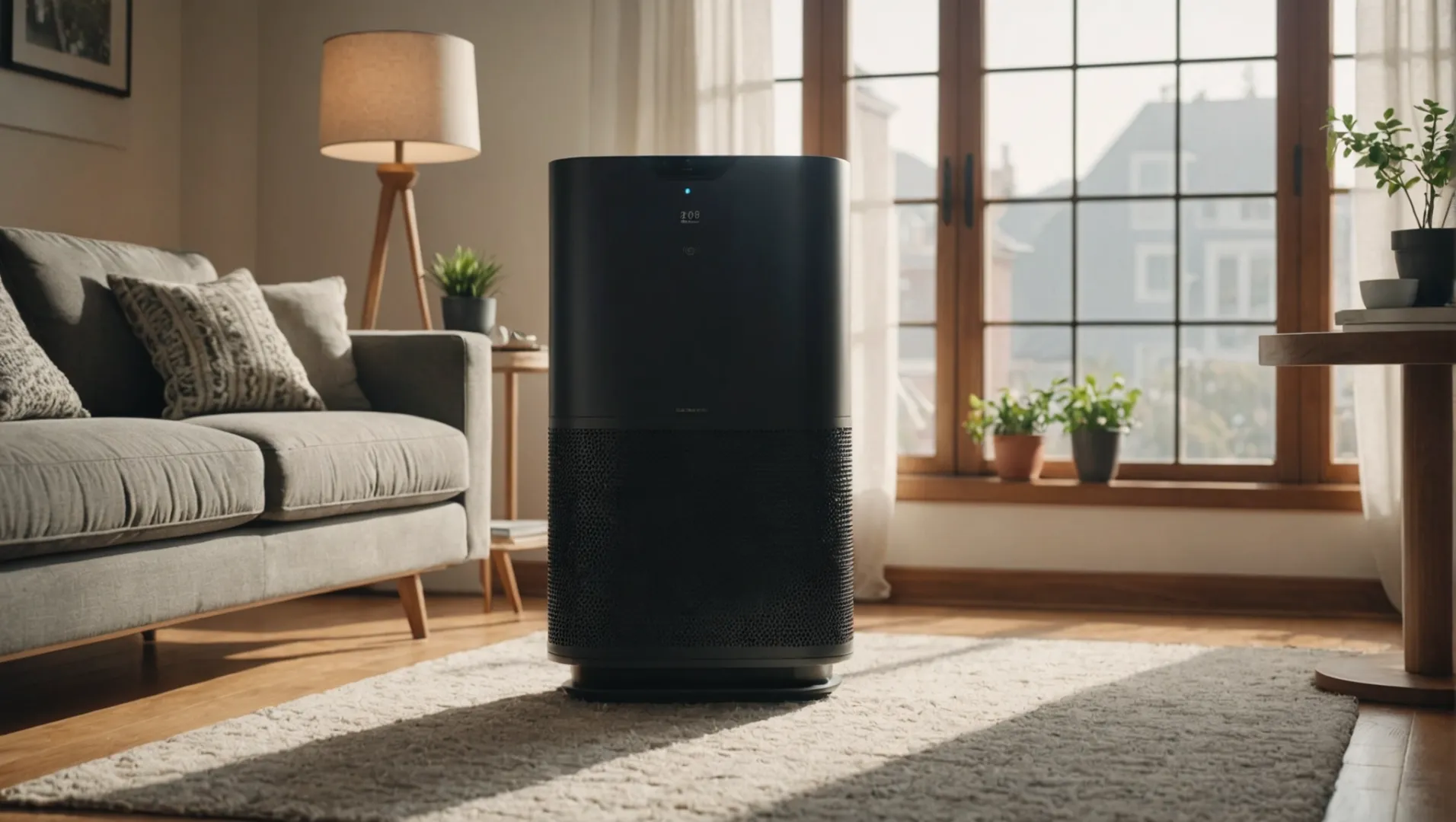
Comprendre l'impact des réglementations sur la qualité de l'air
Le rôle de la législation gouvernementale dans la demande future de purificateurs d'air ne doit pas être sous-estimé. La future réglementation américaine imposant six renouvellements d'air par heure (ACH) dans les espaces clos. Ce règlement s'inscrit dans le cadre d'une initiative plus large visant à renforcer les normes de qualité de l'air à l'intérieur des bâtiments, à la suite de la sensibilisation accrue suscitée par la pandémie de COVID-19.
Les Renouvellement d'air par heure (ACH)6 mesure la fréquence de renouvellement de l'air dans un espace donné. En imposant une norme minimale, le gouvernement vise à améliorer la santé en réduisant les contaminants en suspension dans l'air. Cette réglementation devrait stimuler la demande de purificateurs d'air plus efficaces et de plus grande capacité, capables de répondre à ces nouvelles normes.
L'effet d'entraînement sur le marché
Avec l'application de ces réglementations, les secteurs commerciaux et résidentiels sont susceptibles de connaître une évolution. Les entreprises, les écoles et les établissements de santé devront se conformer à ces normes, ce qui pourrait entraîner l'achat en masse de purificateurs d'air conformes. Cette évolution législative pourrait également conduire à des innovations en matière de technologie de purification de l'air, les fabricants s'efforçant de respecter les nouvelles normes d'efficacité.
Des implications mondiales plus larges
Si la législation américaine crée un précédent, il est probable que d'autres pays lui emboîteront le pas en adoptant des normes similaires. Avec la prise de conscience mondiale des problèmes de qualité de l'air, les marchés internationaux pourraient connaître une augmentation de la demande de produits répondant à ces normes rigoureuses. Cela pourrait ouvrir de nouvelles perspectives d'exportation pour les fabricants qui s'adaptent rapidement à ces exigences réglementaires.
Défis et considérations potentiels
Cependant, il existe des défis potentiels. Les coûts de mise en conformité peuvent représenter un fardeau pour les petites entreprises ou les organisations dont le budget est limité. En outre, des campagnes d'éducation du public pourraient s'avérer nécessaires pour s'assurer que les consommateurs et les entreprises comprennent l'importance et les avantages de l'adhésion à ces normes.
En conclusion, si la législation gouvernementale peut sembler contraignante au départ, elle peut servir de catalyseur à l'innovation et à la croissance sur le marché des purificateurs d'air. Alors que nous nous dirigeons vers des normes de qualité de l'air plus strictes au niveau mondial, il sera essentiel pour les consommateurs et les acteurs du secteur de rester informés et de s'adapter.
La réglementation américaine imposera six ACH dans les espaces clos.Vrai
La réglementation américaine prévue exigera six renouvellements d'air par heure.
Les coûts de mise en conformité n'affecteront pas les petites entreprises.Faux
Les petites entreprises peuvent avoir du mal à faire face aux coûts liés à la mise en conformité avec les nouvelles normes.
Comment la sensibilisation des consommateurs à la qualité de l'air a-t-elle évolué après la pandémie ?
La pandémie de COVID-19 a sensibilisé le monde entier à la qualité de l'air, qui est devenue une préoccupation publique majeure.
Après la pandémie, la sensibilisation des consommateurs à la qualité de l'air s'est considérablement accrue. Ils reconnaissent désormais l'importance des purificateurs d'air, non seulement pour l'élimination des virus, mais aussi pour celle des polluants tels que les odeurs, la fumée, les particules et les COV.
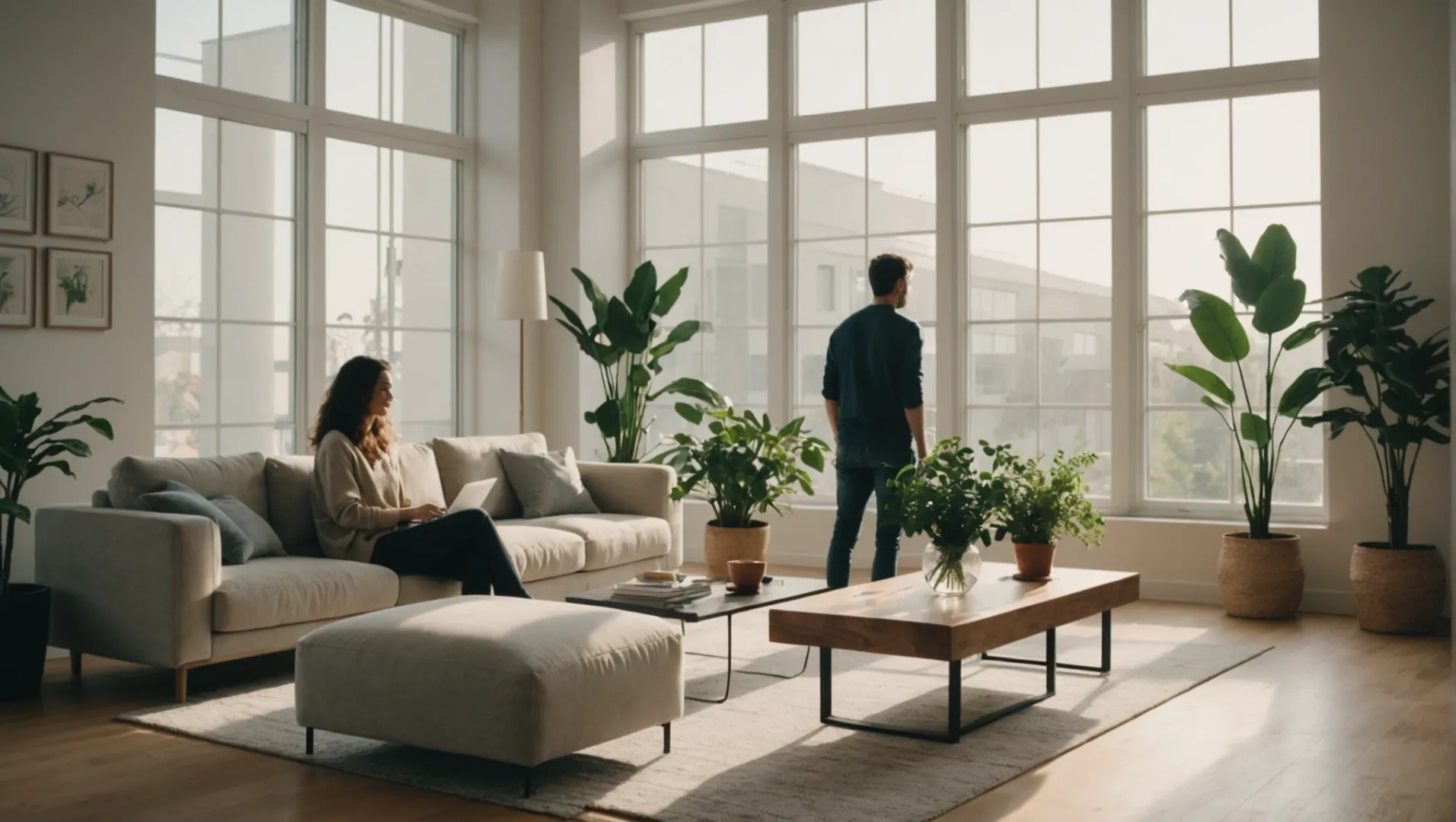
Le changement de perception
Avant la pandémie, la qualité de l'air aurait pu être une préoccupation secondaire pour beaucoup. Cependant, lorsque les fermetures d'usines ont souligné l'importance d'un environnement intérieur sain, les gens ont commencé à s'intéresser à ce qu'ils respiraient dans leur propre maison. Cette une conscience accrue7 a persisté au-delà du pic de la pandémie.
Influence des médias et de l'information
La couverture médiatique accrue pendant la pandémie a joué un rôle crucial dans l'éducation du public à la qualité de l'air. Les rapports soulignant les risques potentiels d'une mauvaise circulation de l'air et des agents pathogènes en suspension dans l'air ont influencé le comportement des consommateurs. Aujourd'hui, les individus recherchent activement des informations sur le maintien d'un air pur, ce qui stimule la demande de purificateurs d'air de haute qualité.
Des préoccupations qui vont au-delà des virus
Initialement motivées par la protection contre les virus, les préoccupations des consommateurs se sont étendues à d'autres facteurs liés à la qualité de l'air. Les gens sont désormais conscients des risques posés par les matières particulaires8Cette évolution conduit à une approche plus globale de la gestion de l'air intérieur. Cette évolution conduit à une approche plus globale de la gestion de l'air intérieur.
| Type de polluant | Sources communes | Impacts sur la santé |
|---|---|---|
| Matières particulaires (PM) | Fumée, poussière, pollen | Problèmes respiratoires, maladies cardiaques |
| COV | Peintures, produits de nettoyage | Maux de tête, lésions hépatiques |
| Odeurs | Cuisine, animaux | Malaise, nausées |
Le rôle de la législation
Les futures réglementations gouvernementales devraient renforcer cette tendance. Aux États-Unis, la législation à venir imposant six renouvellements d'air par heure (ACH) pourrait faire en sorte que les purificateurs d'air fassent encore plus partie intégrante des habitations et des bureaux. Cela reflète une reconnaissance croissante, au niveau politique, de l'impact de la qualité de l'air sur la santé publique.
Un phénomène mondial
La prise de conscience ne se limite pas à une région, mais s'étend à tous les continents. Grâce aux médias internationaux qui partagent leurs idées et leurs recherches, les consommateurs du monde entier exigent de meilleures solutions pour répondre à leurs besoins en matière de qualité de l'air intérieur. Cette tendance mondiale suggère un changement permanent dans la manière dont la qualité de l'air est perçue et considérée comme une priorité dans la vie quotidienne.
La sensibilisation à la qualité de l'air s'est accrue après la pandémie.Vrai
La pandémie a mis en lumière les problèmes de qualité de l'air, ce qui a conduit à une prise de conscience accrue.
La législation impose six renouvellements d'air par heure dans les habitations.Faux
Bien que discutée, une telle législation n'est pas encore obligatoire aux États-Unis.
Conclusion
La pandémie a modifié de façon permanente la perception de la qualité de l'air, ouvrant la voie à une croissance future du marché des purificateurs d'air. Restez informé des changements législatifs et de l'évolution des besoins des consommateurs pour tirer parti des nouvelles opportunités.
-
Découvrez comment les habitudes de consommation ont évolué après la pandémie : Par exemple, la conscience environnementale a augmenté de manière significative pendant la pandémie de COVID-19, ce qui se traduit par des efforts de la part des consommateurs pour ... ↩
-
En savoir plus sur les réglementations potentielles affectant la demande future de purificateurs d'air.. : En vertu de la loi sur la qualité de l'air (Clean Air Act, CAA), l'EPA fixe des limites à certains polluants atmosphériques, notamment en ce qui concerne la quantité de polluants pouvant se trouver dans l'air partout aux États-Unis. ↩
-
Comprendre comment la concurrence accrue a influencé l'offre de produits et la fixation des prix : Le marché est tiré par l'augmentation des niveaux de pollution de l'air. En outre, l'innovation technologique et l'extension du portefeuille ... ↩
-
Découvrez pourquoi certaines entreprises n'ont pas pu poursuivre leurs activités après la pandémie : Applied UV Inc, qui a acquis quatre entreprises de purification de l'air entre 2021 et 2023, s'est placée sous la protection de la loi sur les faillites vendredi, citant $1 millions ... ↩
-
En savoir plus sur les réglementations potentielles affectant la demande future de purificateurs d'air.. : Projet de loi visant à faciliter la mise en œuvre efficace par les États des normes nationales de qualité de l'air ambiant, et à d'autres fins. ↩
-
En savoir plus sur les mesures d'ACH, cruciales pour la conformité de la qualité de l'air intérieur.. : Le renouvellement de l'air par heure, abrégé ACPH ou ACH, ou taux de renouvellement de l'air est le nombre de fois où le volume d'air total d'une pièce ou d'un espace est complètement ... ↩
-
Découvrez en détail comment la pandémie COVID-19 a suscité des inquiétudes quant à la qualité de l'air .. : Notamment, l'impact de la pandémie de COVID-19 a eu un impact plus important sur la fluidité de la consommation durable, suivi par l'environnement ... ↩
-
Découvrez les dangers des particules et leurs effets sur la santé : Effets sur la santé - décès prématuré chez les personnes souffrant de maladies cardiaques ou pulmonaires - crises cardiaques non mortelles - troubles du rythme cardiaque - aggravation de l'asthme - ... ↩


